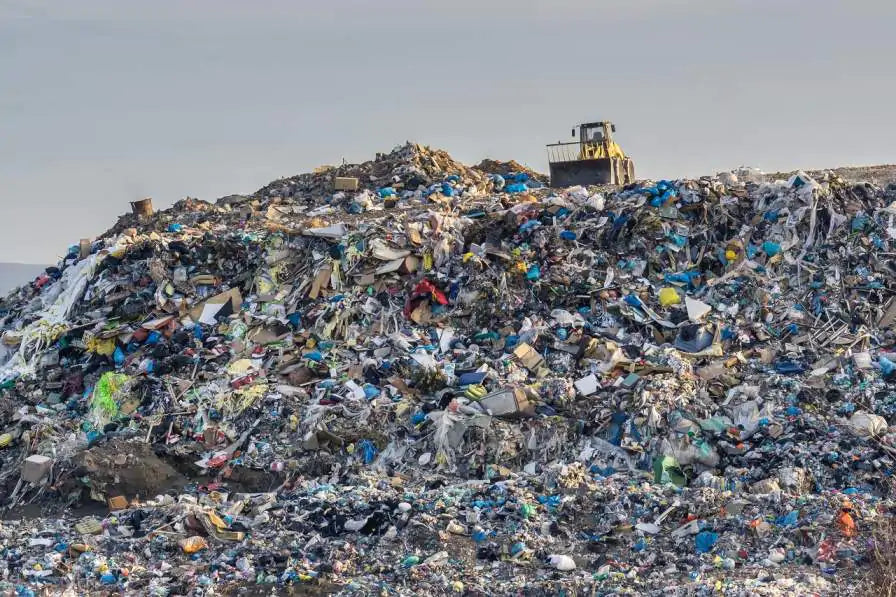Why not add these to compliment your wheelie bins?
Your basket is currently empty.
Shop NowWe guarantee to have the lowest price! Find the same bin for a cheaper price and we will beat it!

Landfill: What Happens When They’re Full?
Landfills are useful things; they keep our unwanted waste – everything that can’t be recycled – in one spot, making sure that the excess fluid and methane gas that comes from it is disposed of safely. Even the smell is minimised. And because they tend to be out of the way, we don’t even have to really think about them much.
Perfect.
Only they aren’t infinite. They will all fill up. And there won’t be room to make anymore. Once a spot has been used as a landfill site and it fills up, it is covered over and compressed (again), and the area can be used for building. But it can’t be opened up for landfill again. Which is potentially a big problem since the government has predicted that the UK will run out of landfill space by 2018. It’s startlingly close.
Not only that, but there is a European Union directive that means massive (we’re talking up to £1 million a day) fines will be imposed on the UK if more than 35 percent of waste is still sent to landfills by 2020. Since our current figures sit at something along the lines of 48 percent, we’ve got a way to go yet. And not long to get it sorted.
So, if the landfills are all but full, and if a hefty fine is coming our way if we put too much into the ones that are left, what are the options? What can we do with our waste when the landfills can’t take it anymore?
One option – albeit an unpopular one – is incineration. It’s an effective way of getting rid of rubbish, but the worry that comes with burning everything is the emissions that come from it. The good news is that a lot of research and innovation has been put into these incinerators, and far from the massive, almost terrifying machines of the 1990s, the ones that belched out noxious smoke and really were a bad idea when it came to the environment, these days the machines are much cleaner, and more efficient.
The downside to incinerators is that in order to be cost effective they need to be big. Huge. And that means that they need to be filled with rubbish that comes from a wide area – a much bigger area than that of a landfill. So more trucks will be required to drive further to bring the waste to the incinerators, and that has an impact of the carbon footprint of the plant. What a cleaner incinerator gives back, the lorries take away again. Another issue with incinerators is that since nothing needs to be sorted – it can all be burned – recycling rates will go down. If it doesn’t, there won’t be enough waste to burn to make the whole thing viable.
Composting (on a large scale) is another idea that might, if not eliminate landfills altogether, could reduce the amount of rubbish we need to put into them. Food waste can easily be composted but, unlike a mainly unmanaged compost heap as we might see in the garden, the plants that look after this waste maintain it carefully, ensuring that it all breaks down as quickly as possible thanks to the addition of just the right amounts of irrigation, oxygen, and agitation. This last is particularly useful as it ensures that the waste decays at the same time. It’s done by powerful machines and is truly efficient. The worry about compost is that it emits heat, and lots of it. But thermometer probes linked to computers in a control room are used to make sure that the temperature doesn’t go over 70 degrees. Another issue is that the end product, the compost itself, doesn’t make much money so not many people (and government) are interested. Secondly, the compost that is produced can only be used for forestry works, and can’t be used on food.
Finally, we have plasma technology. It sounds incredibly sci-fi, but it is very much of the now. Plasma technology works by heating the waste to extremely high temperatures which releases a gas that can go on to be used to power engines. It can even produce electricity. And it’s clean too. But this is not the same as incineration, and there is barely anything left behind after the process – no ash, no mess. The only by-product is a kind of lava which, when it cools, leaves a glassy substance called plamarok. And what can plamarok do? It can be used as a building material.
So, just what is the future of waste disposal in the UK and across the world? Although it’s impossible to say, we can take comfort in the fact that much research and development is going into this area right now – landfills will soon be a thing of the past.